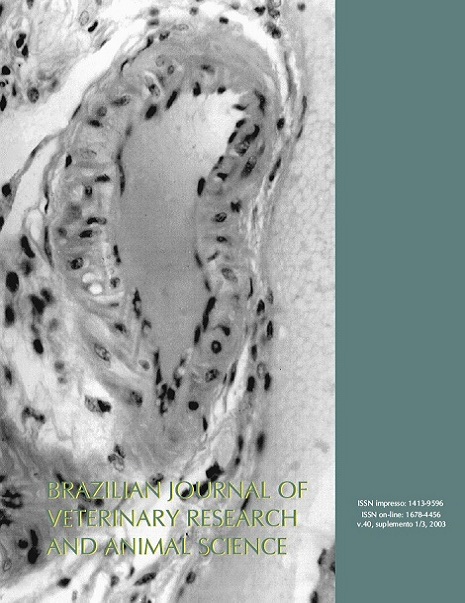Polluent power of pig breeding residual water after utilization of the integrated treatment
DOI:
https://doi.org/10.1590/S1413-95962003000800006Keywords:
Heavy metals, Percolates, Lysimeters, Pig breeding, WaterAbstract
In a field trial it was evaluated the potential of environmental impact of pig breeding residuary waters, placed in storage tanks, with distinct time of hydraulic retention and applied, subsequently, in lysimeters fulfilled with sandy, clayish, and mediun soils. To do so, concentrations of zinc and copper in residual waters and after storage for four times of hydraulic retention were established, in the lysimeters percolate and in four levels of depth in the soils, and pH determinations in the soils. Storage was not effective in reduction, to the levels required by legislation, of zinc and copper concentrations in tank and storage effluents. Application in the soil caused efficient decreases in zinc and copper concentrations. At last, focusing the fertilizer contribution of those residuary waters, the clayish soil was the most improved with that integrated system of treatment, helping the reduction of zinc and copper concentrations to values bellow the ones permitted by legislation, what would protect the ground water from contamination by these two heavy metals.Downloads
Download data is not yet available.
Downloads
Published
2003-01-01
Issue
Section
UNDEFINIED
License
The journal content is authorized under the Creative Commons BY-NC-SA license (summary of the license: https://
How to Cite
1.
Soares e Barros LS, Amaral LA do, Lucas Júnior J de. Polluent power of pig breeding residual water after utilization of the integrated treatment. Braz. J. Vet. Res. Anim. Sci. [Internet]. 2003 Jan. 1 [cited 2024 Jul. 26];40(supl.):126-35. Available from: https://www.revistas.usp.br/bjvras/article/view/11433





